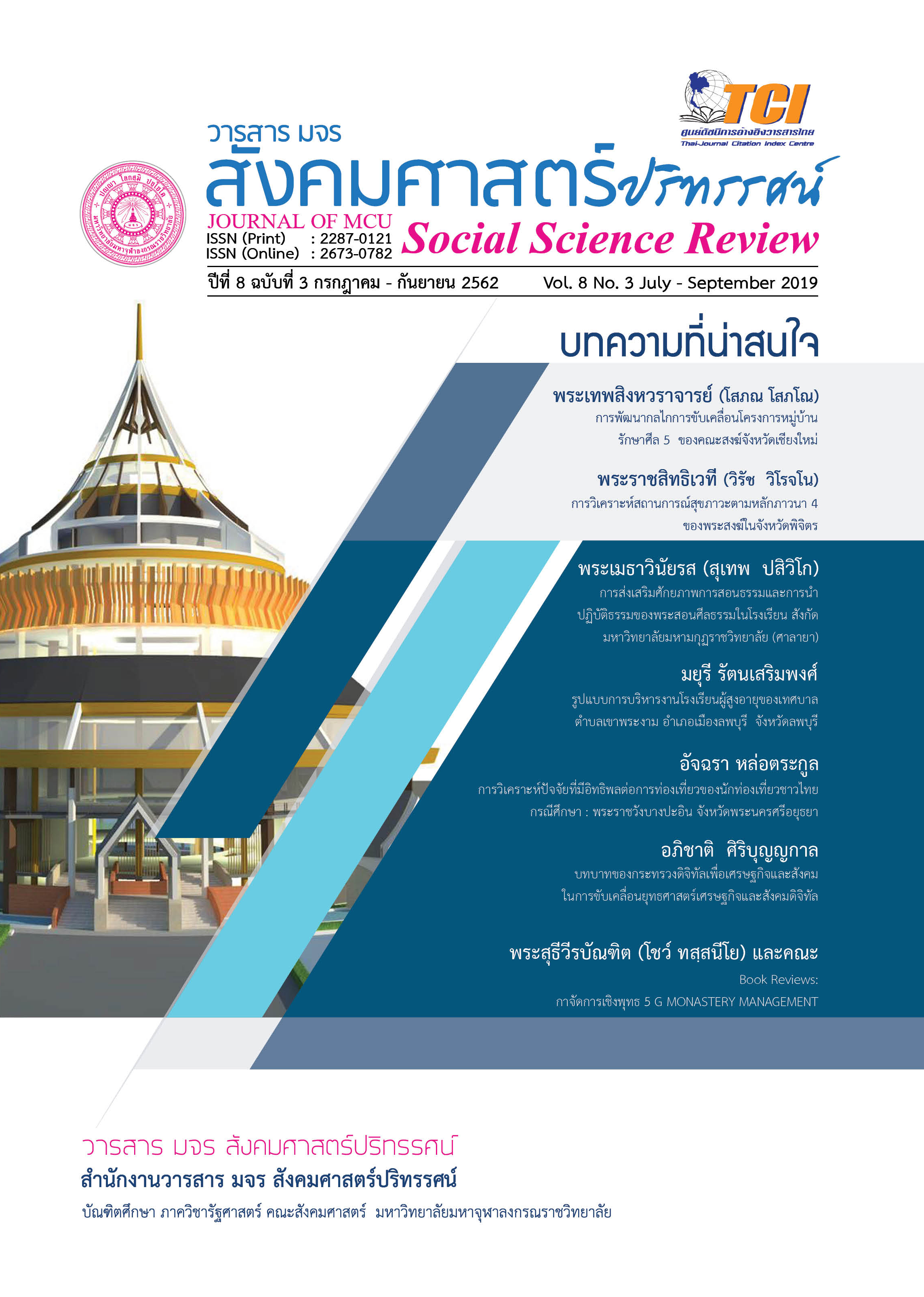SITUATIONAL ANALYSIS OF HEALTH BASED ON THE CONCEPT OF BHAVANA 4 AMONG BUDDHIST MONKS IN PHICHIT PROVINCE
Keywords:
Health, Bhavana 4, Buddhist monksAbstract
The objective of this study was to examine health based on the concept of Bhavana 4 among Buddhist monks in Phichit province. There were 379 monks participated in the study. Five questionnaires were used to collected data, including demographic form, WHO Steps questionnaire, Thai GHQ-28, social health questionnaire, and intellectual health questionnaire. Descriptive analysis was used for data analysis.
Results found that for physical health, 43.49% were obese, 39.21% were central obese. According to dyslipidemia, percentage of monks who had abnormal value of total cholesterol, HDL-cholesterol, LDL-cholesterol, and triglycerides were 32.01, 14.33, 30.28, and 22.56, respectively. According to physical examination, hypertension was found among 40.09% For diabetes, 11.96% had impaired fasting plasma glucose while 12.58% had diabetes. In addition, 6.71% had high level of creatinine. For mental health, 10.66% had abnormal GHQ. Additionally, social health and intellectual health were at moderate level.
Results revealed that monks had changes in physical health. Monks had higher prevalence of non-communicable diseases’ risk factors more than Thai men. Thus, health promotion among monks is important, urgent, and challenges for all stakeholders. Collaborative intervention to promote health and well-being among monks is needed to enhance health and well-being among monks.
References
Angkatavanich, J., & Zuesongdham, M. (2012). Nutritional problem solving and management project for monks and novices to achieve chronic disease prevention and sustainable health through the development of role model monk: good nutrition and sustainable health and role model layman supporting good nutrition in monks. Journal of the international association of Buddhist studies, 4, 1-6.
Boonyasiriwat, W., Pornprasit, N., Chaiwiroj, C, & Sanruan, S. (2013). Predicting intentions to offer healthy foods to Buddhist monks in Thailand using the theory of planned behavior, self-efficacy, and prosocial motivations. Proceeding of the 10th Asian Association of Social Psychology Biennial Conference.
Jutrakul, P. (2018). Health News: Alms giving with low salt diet reduces number of monks with non-communicable diseases. Retrieved from https://goo.gl/NDRp4a (in Thai)
National office of Buddhism. (2016). Basic information of Buddhism, 2016. Retrieved from https://www.onab.go.th/wp-content/uploads/2009/07/2559.pdf (in Thai)
Phachan, S., & Muktabhant, B. (2015). Nutritional status and food consumption of Buddhist monks in mueang district, Khon Kaen province. Srinagarind Medical Journal, 30, 552-561. (in Thai)
Priest hospital (2017). Health promotion project for Buddhist monks and novices in Thailand. Retrieved from https://www.priest-hospital.go.th/healthCareforMonk/ (in Thai)
WHO. (2015). Thailand: WHO statistical profile. Retrieved from https://www.who.int/gho/ countries/tha.pdf?ua=1
Downloads
Published
How to Cite
Issue
Section
License
Copyright (c) 2019 Journal of MCU Social Science Review

This work is licensed under a Creative Commons Attribution-NonCommercial-NoDerivatives 4.0 International License.
In order to conform the copyright law, all article authors must sign the consignment agreement to transfer the copyright to the Journal including the finally revised original articles. Besides, the article authors must declare that the articles will be printed in only the Journal of MCU Journal of Social Sciences. If there are pictures, tables or contents that were printed before, the article authors must receive permission from the authors in writing and show the evidence to the editor before the article is printed. If it does not conform to the set criteria, the editor will remove the article from the Journal without any exceptions.





